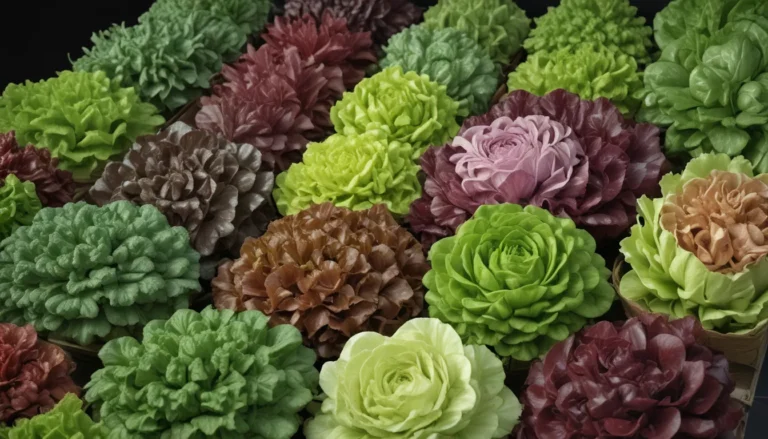What Causes White Spots on Lettuce Leaves?

Lettuce is a versatile and tasty addition to any garden, but sometimes white spots can mar its vibrant appearance. In this comprehensive guide, we will explore the common causes of white spots on lettuce leaves and provide valuable tips on how to identify, treat, and prevent these issues. So, grab a cup of tea and let’s dive into the world of lettuce care!
Common Culprits of White Spots on Lettuce:
- Downy Mildew
- Powdery Mildew
- Mealybugs
If you have spotted mysterious white spots on your lettuce, fear not! By understanding the root causes of these issues, you can take proactive steps to protect your crop and ensure a bountiful harvest.
1. Downy Mildew: The Sneaky Invader
Downy mildew is a fungal disease that can wreak havoc on lettuce plants. Characterized by yellow or light green angular spots on the top surface of leaves and white fluff on the undersides, this pathogen thrives in moist, cool conditions. If left untreated, downy mildew can quickly spread and even kill the plant.
Symptoms of Downy Mildew:
– Yellow or light green spots on leaves
– White fluff on undersides of leaves
– Browning and drying of lesions
– Rapid spread from older to newer leaves
To combat downy mildew, consider the following strategies:
– Water at the soil level to reduce moisture on leaves
– Space plants adequately to promote airflow
– Plant resistant cultivars like ‘Adriana’ and ‘Bluerock’
– Use preventative fungicides if necessary
2. Powdery Mildew: The Floury Foe
Powdery mildew is another common culprit of white spots on lettuce leaves. This fungal disease starts as floury patches on the foliage and can quickly spread, causing leaves to deform, dry up, and turn brown.
Symptoms of Powdery Mildew:
– Floury patches on leaves
– Deformed and discolored foliage
To tackle powdery mildew, explore various treatment options such as milk applications or fungicides. For a detailed guide on combating this pesky disease, refer to our resources.
3. Mealybugs: The White Intruders
Mealybugs are tiny, sap-sucking insects that can be mistaken for white spots on lettuce leaves. These pests, often found clustered under leaves or along stems, can stunt plant growth and lead to yellowing foliage.
Identifying Mealybugs:
– White waxy lumps on foliage
– Slow-moving insects
– Hidden clusters under leaves
If you suspect a mealybug infestation, take swift action to manage these pests and protect your lettuce crop. Our comprehensive guide on handling mealybugs offers valuable insights and strategies for effective pest control.
Preventing White Spots on Lettuce: A Gardener’s Guide
To avoid the headache of dealing with white spots on your lettuce, consider implementing the following preventative measures:
– Monitor your garden regularly for signs of disease or pests
– Choose resistant lettuce cultivars like ‘Green Star’ and ‘Conversion’
– Practice good garden hygiene by removing debris and weeds
– Maintain proper spacing between plants to promote airflow
By staying vigilant and proactive in your lettuce care routine, you can minimize the risk of white spot infestations and enjoy a thriving garden filled with lush greens.
In Conclusion
White spots on lettuce leaves may seem like a daunting challenge, but with the right knowledge and preparation, you can effectively combat these issues and protect your beloved crop. Whether it’s downy mildew, powdery mildew, or mealybugs, each assailant has its weaknesses that can be exploited through targeted strategies and treatments.
Remember, a healthy garden starts with attentive care and a keen eye for potential threats. So, keep an eye out for those sneaky white spots and arm yourself with the knowledge needed to keep your lettuce patch thriving year-round. Happy gardening!
Disclaimer: This article is intended for informational purposes only. Always consult with a gardening expert for personalized advice and guidance tailored to your specific needs.
© Gardener’s Network, LLC. ALL RIGHTS RESERVED. See our Terms of Service for more details. Product images courtesy of High Mowing Organic Seeds





